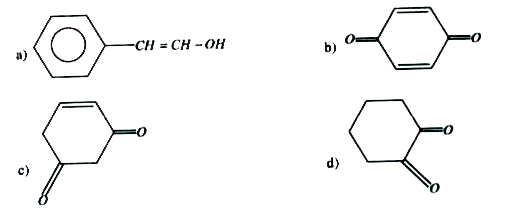The difference in bond energy between the experimental and the calculated values of HY is 1.96kcalmol−1. The electronegativity of Y is (electronegativity of H is 2.1) Solution in Telugu
1.90
1.81
1.78
1.75
The correct Answer is:B
Step by step video, text & image solution for The difference in bond energy between the experimental and the calculated values of HY is 1.96 k cal mol^(-1). The electronegativity of Y is (electronegativity of H is 2.1) by Chemistry experts to help you in doubts & scoring excellent marks in Class 11 exams.
Topper's Solved these Questions
- BOOK - AAKASH SERIESCHAPTER - PERIODIC CLASSIFICATIONEXERCISE - OBJECTIVE EXERCISE - 2 (METALLIC NATURE AND NATURE OF OXIDES)13videos
PERIODIC CLASSIFICATION
- BOOK - AAKASH SERIESCHAPTER - PERIODIC CLASSIFICATIONEXERCISE - OBJECTIVE EXERCISE - 2 (DIAGONAL RELATIONSHIP)9videos
PERIODIC CLASSIFICATION
- BOOK - AAKASH SERIESCHAPTER - PERIODIC CLASSIFICATIONEXERCISE - OBJECTIVE EXERCISE - 2 (ELECTRONIC AFFINITY)10videos
PERIODIC CLASSIFICATION
- BOOK - AAKASH SERIESCHAPTER - ISOMERISM EXERCISE - ADDITIONAL PRACTICE EXERCISE ( PRACTICE SHEET (ADVANCED) INTEGER TYPE QUESTIONS)10videos
ISOMERISM
- BOOK - AAKASH SERIESCHAPTER - PERIODIC PROPERTIESEXERCISE - LEVEL-II (TYPE -II) (PRACTICE SHEET -3 (SUBJECTIVE/ ANALYTICAL TYPE QUESTIONS ))8videos
PERIODIC PROPERTIES
Similar Questions
Elements A, B and C belong to the same period in the long form of the periodic table. The nature of the oxides of A, B and C is amphoteric basic and acidic respectively. The correct order of the atomic numbers of these elements is
02:16View SolutionDiagonal relationship is present between the lighter elements of periods
02:55View SolutionWhen an electron is added, energy is absorbed in which of the following?
02:46View SolutionTautomerism is exhibited by X number of compounds among the following. What is X.
 View Solution
View SolutionWhat is the valency possible to Arsenic with respect to oxygen and hydrogen?
View SolutionCalculate electronegativity of carbon at Pauling scale Given that : E_(H-H) =104 .2 kcal "mol"^(-1) E_(C-C) =83.1 kcal "mol"^(-1) , E_(C-H) =98.8 kcal "mol"^(-1) . Electronegativity of hydrogen =2.1 .
03:58View SolutionThe experimental bond energy of HY differs from its calculated valueby 1.96 k.cals//"mole" . The electronegativity of 'y' is equal to
03:33View SolutionH-H, X-X and H−X bond energies are 104Kcal/mole60Kcal/mole and 101kcal/mole. Assuming the electronegativity of hydrogen to be 2.1 the electronegativity of unknown element X is (√19=4.36)
03:58View SolutionCalculate the electronegativity of fluorine from following data : F_(H-H) =104. 2 k cal mol ^(-1) E _(F-F) =36.6 kcal mol ^(-1) E _(H-F) = 134. 6 kcal mol ^(-1) Electronegativity of H is 2.05
02:56View SolutionThe electronegativity of H, N are 2.1, 3.0 respectively. Calculate percentage ionic character of H-N bond.
03:58View SolutionBond energies of H2,Cl2 and HCl are respectively 104, 58 and 103 k cal mol−1. Calculate Pauling's electronegativity of chlorine.
02:35View SolutionBond energies of H_2, F_2 and HF are respec tively 104.2, 36.6 and 134.6 k cal "mol"^(-1) . If the electronegativity value of hydrogen is 2.1, calculate the electro-negativity value of fluorine.
02:14View SolutionBond energies of H2,Cl2 and HCl are respectively 104, 58 and 103 k cal mol−1. Calculate Pauling's electronegativity of chlorine.
02:54View SolutionH-H, X-X and H-X bond energies are 104 Kcal/mole 60Kcal/mole and 101Kcal/ mole. Assuming the electronegativity of hydrogen to be 2.1 the electronegativity of unkonwn element X is (√19=4.36)
02:09View SolutionBond energies of H2,Cl2 and HCl are respectively 104, 58 and 103 k cal mol−1. Calculate Pauling's electronegativity of chlorine.
View Solution

